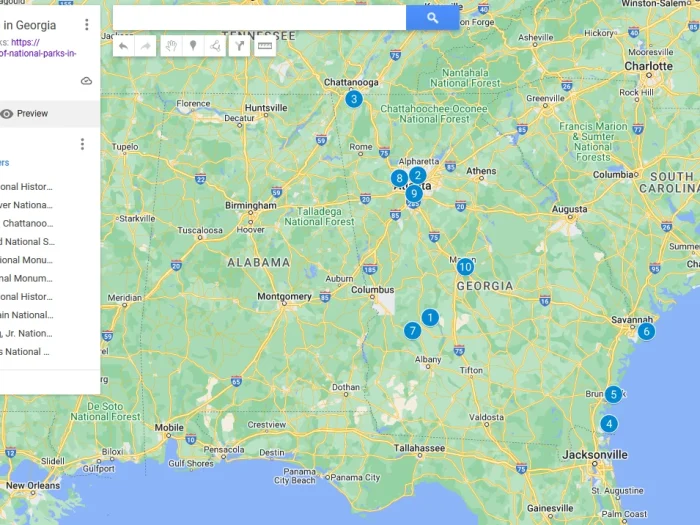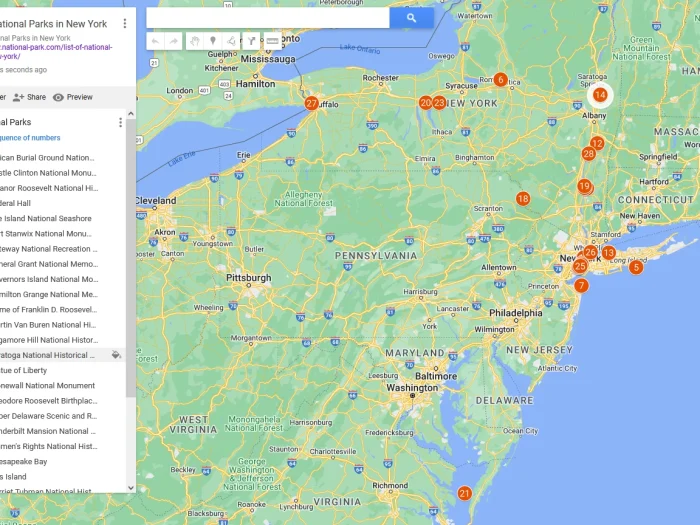How to Move to Canada from US
Moving to Canada from the US is a common process, but it requires planning and knowledge of Canadian immigration options and requirements. Here’s an overview of the key steps involved:
How to Move to Canada from US
1. Determine Your Eligibility and Visa Pathway
Canada offers multiple immigration pathways, each with different requirements. Some common pathways include:
- Express Entry: The most popular route for skilled workers, Express Entry is a points-based system where applicants are scored on factors like age, education, work experience, and language proficiency.
- Provincial Nominee Program (PNP): Each Canadian province and territory has its own immigration program for skilled workers. If you have a specific province in mind, this could be a great option.
- Family Sponsorship: If you have family members in Canada who are Canadian citizens or permanent residents, they may be able to sponsor you.
- Work Permit: If you have a job offer from a Canadian employer, you might qualify for a temporary work permit. Many work permits also have pathways to permanent residency.
- Study Permit: Studying in Canada can lead to Post-Graduate Work Permits (PGWP), which allow you to work after graduation and may help you qualify for permanent residency.
- Self-Employed or Investor Program: For entrepreneurs and investors, there are options for those who want to start or invest in a business in Canada.
2. Gather Required Documents
Depending on your chosen pathway, you may need various documents, such as:
- Proof of Identity: Valid passport, birth certificate, etc.
- Proof of Education: Degree certificates, diplomas, or transcripts (some pathways may require an Educational Credential Assessment).
- Proof of Work Experience: Reference letters, employment contracts, and pay stubs.
- Language Proficiency Test: English (IELTS or CELPIP) or French (TEF Canada) test results.
- Proof of Funds: A financial statement to show you can support yourself initially (varies by immigration program).
3. Apply Online for Your Chosen Pathway
- For Express Entry, you’ll create an online profile, and, if eligible, you’ll be entered into the Express Entry pool. Higher-scoring candidates are selected in regular rounds of invitations.
- For other programs like PNP or family sponsorship, you’ll need to complete the specific application forms and submit them to Immigration, Refugees and Citizenship Canada (IRCC).
4. Wait for Processing and Approval
Processing times vary based on the program and your nationality. For example, Express Entry applications typically take about 6 months after an invitation to apply, while family sponsorship applications may take 12-24 months.
5. Prepare for Arrival in Canada
Once your application is approved, you’ll receive a Confirmation of Permanent Residence (COPR) document or, if you’re coming on a temporary visa, a work or study permit. Make sure to:
- Arrange housing: Look for temporary or permanent accommodation.
- Learn about Canadian healthcare: Many provinces have a waiting period before you can access public healthcare.
- Get a Social Insurance Number (SIN): This will be essential for working and accessing services.
- Prepare for the Canadian Job Market: Consider job boards, networking sites, and employment services to help you settle in.
Additional Tips
- Consider professional help: An immigration consultant or lawyer can be helpful if your situation is complex.
- Visit Canada first: If possible, consider visiting on a temporary basis to understand the local job market, culture, and housing options.
- Stay updated: Immigration policies and requirements change, so check the IRCC website regularly for updates.
How much does it cost to move to Canada from US?
1. Immigration Application Fees:
Express Entry Program:
- Application Processing Fee: Approximately $620 USD per adult.Right of Permanent Residence Fee (RPRF): Around $375 USD per adult.Dependent Child Fee: About $170 USD per child.
2. Language Testing:
- Tests like IELTS or CELPIP are required to demonstrate language proficiency.
- Costs range from $230 to $300 USD, depending on the test and location.
3. Educational Credential Assessment (ECA):
- If you have foreign educational qualifications, an ECA is necessary.
- Fees are approximately $200 to $220 USD, excluding potential courier charges.
4. Medical Examinations:
- Mandatory medical exams can cost between $150 and $200 USD per person.
5. Police Clearance Certificates:
- Required from countries where you’ve lived for six months or more.
- Costs vary by country but typically range from $20 to $50 USD.
6. Proof of Funds:
- Certain immigration programs require proof of sufficient funds to support yourself and any dependents upon arrival.
- The required amount varies based on family size.
7. Moving and Relocation Costs:
Shipping Personal Belongings:
- Costs depend on the volume and distance.
- Estimates range from $1,500 to $7,000 USD.
Travel Expenses:
- Airfare varies based on origin and time of booking.
- One-way flights can range from $300 to $1,000 USD.
8. Initial Settlement Funds:
- It’s advisable to have funds to cover initial living expenses, including housing, utilities, food, and transportation.
- A general recommendation is to have at least $10,000 to $15,000 USD available.
Summary:
For an individual, the total estimated cost to move to Canada can range from $3,000 to $10,000 USD, excluding proof of funds. For families, this amount will increase accordingly. These figures are approximate and can vary based on individual circumstances and choices.
Additional Considerations:
- Exchange Rates: Be mindful of currency fluctuations between USD and CAD, as they can impact costs.
- Cost of Living: Living expenses in Canada may differ from those in the U.S., with some costs being higher or lower depending on the region.
- Healthcare: Canada offers publicly funded healthcare, but newcomers may need private insurance until they become eligible.
Planning and budgeting carefully will help ensure a smooth transition to your new life in Canada.
How to move to Canada from US with no money?
Moving to Canada without substantial funds is challenging, as many immigration pathways require proof of financial resources to support yourself. However, there are ways to explore Canadian opportunities and potentially build a pathway to residency with limited funds. Here are some options to consider:
1. Work Permits and Job Offers
- Temporary Foreign Worker Program (TFWP): This program allows Canadian employers to hire foreign workers for roles they can’t fill locally. While some positions may require specific skills, you may be able to find opportunities in industries with labor shortages.
- Seasonal Agricultural Worker Program (SAWP): If you’re interested in temporary work in agriculture, this program allows foreign nationals to work in Canadian farms
2. Working Holiday Visa (International Experience Canada – IEC)
- This program is available to citizens of certain countries aged 18-35 (age limits vary by country). It allows you to work and travel in Canada for up to two years.
- While proof of some initial funds is required (around $2,500 CAD), this visa can help you earn income in Canada and potentially build a foundation for more permanent residency.
3. Study and Work Programs
- Student Visa with Work Authorization: If you’re interested in studying, Canadian student visas allow you to work up to 20 hours per week during school terms and full-time during breaks.
- While tuition fees and living expenses can be high, some affordable community colleges or scholarships may help reduce costs.
- Completing a Canadian degree or diploma can also open doors for the Post-Graduation Work Permit (PGWP), which allows you to work in Canada after graduation.
4. Provincial Nominee Programs (PNPs)
- Some provinces have specific streams targeting foreign workers with skills in high-demand sectors, which may not require substantial proof of funds, especially if you have a job offer.
- Certain PNP streams, like the Saskatchewan Hard-to-Fill Skills Pilot, target entry-level positions in fields such as healthcare, construction, and hospitality.
- After obtaining a job offer, you may be eligible for a Provincial Nomination, which can help you apply for permanent residency.
5. Live-In Caregiver Program (Home Child Care Provider and Home Support Worker)
- If you have experience or qualifications in childcare or elderly care, Canada’s caregiver programs offer work permits with a pathway to permanent residence.
- These programs allow you to work for a specific employer, and after accumulating two years of work experience in Canada, you may be eligible for permanent residency.
6. Consider Remote or Freelance Work with Canadian Companies
- Building connections with Canadian employers or clients through remote or freelance work can sometimes lead to job offers. If a company is interested in hiring you full-time in Canada, they might sponsor you for a work permit.
- Platforms like Upwork, Fiverr, or LinkedIn can be useful for finding freelance or contract work, building experience, and establishing a Canadian professional network.
7. Refugee or Asylum Pathways
- If you are facing persecution in your home country, Canada has pathways for refugees and asylum seekers. The process involves proving that you cannot safely return to your home country, so this path is generally only available for those in genuine need of protection.
8. Volunteer or Community-Based Programs
- Organizations like WWOOF Canada offer food and accommodation in exchange for volunteer work on organic farms. While this doesn’t provide a direct pathway to residency, it may offer a low-cost way to explore Canada and build connections.
- Some volunteer programs may accept applicants for temporary roles in exchange for accommodation, allowing you to save while looking for paid opportunities.
Tips to Get Started on a Budget:
- Network with Canadians and Immigrants: Join online forums, Facebook groups, and LinkedIn networks focused on moving to Canada. These groups can be invaluable for finding job leads, affordable accommodation options, and local advice.
- Build Skills for In-Demand Jobs: Focus on skills or certifications that are in high demand, such as trades, healthcare, or IT, which might increase your chances of securing job offers or work permits.
- Look for Scholarships or Financial Aid: Research Canadian scholarships, especially if you’re planning to study. Some Canadian universities and community colleges offer scholarships specifically for international students.
While moving to Canada without significant funds is challenging, leveraging work permits, temporary programs, and low-cost options can help you find a pathway to residency.
Tag: how to move to Canada without a job, how to move to Canada from US permanently
Read more:





